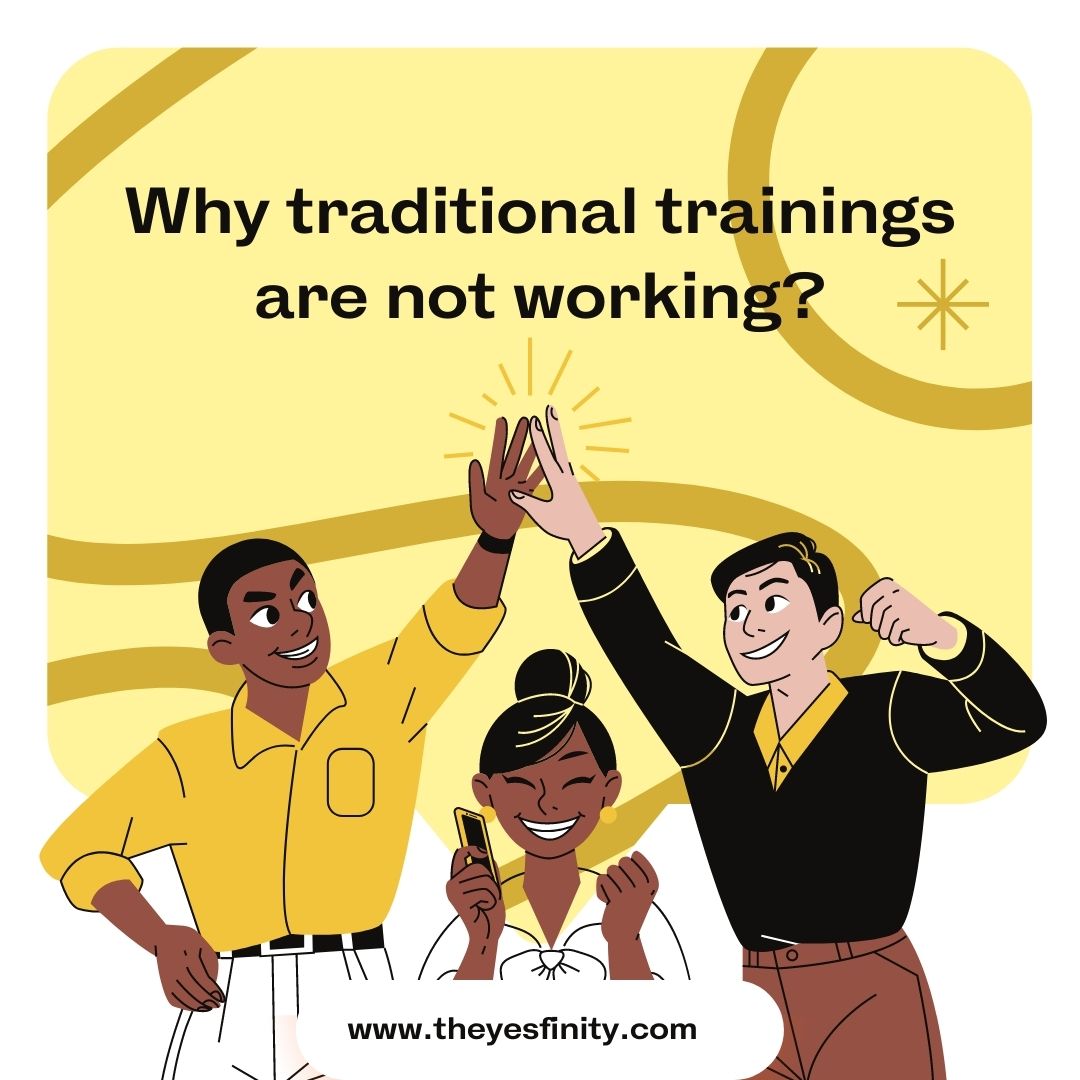Today in the hyper-connected world we live in, learning is everywhere. It has evolved so much that we carry learning in our fingertips in the form of m-Learning. Learning is inevitable and mandatory in the current situation. We can never stop learning if we want to keep up with the rest of the world.
There is an interesting saying, “You must run faster and faster to just stand where you are!” This saying precisely explains the competition we face today. To meet the requirements of the current day business, it is critical that we keep our learning ongoing. In an organization, where people with different competencies work together to build the business, the need to provide opportunities for employees to learn constantly and build their competencies further is enormous.
As the businesses grow and the marketplace expands globally, it is becoming increasingly important for businesses to establish a stable and reliable workforce and it is simply impossible to ignore continuous learning needs for your workforce in the present day.

Why are traditional training not working today?
The traditional training strategy of using live classes has become increasingly difficult to conduct due to several reasons:
- Lack of flexibility
- Excessive cost
- Inability to make the training learner-centric
- Lack of freedom
- One size doesn’t fit all
To overcome the issues that traditional training has brought to organizations and keep the employee development going, organizations have started adapting a more flexible and cost-effective solution: eLearning and mLearning.
Both these types of training programs have proven to be extremely beneficial for organizations due to several reasons. Rather than just jumping into the pool only because you see the rest do so, it is essential that organizations understand why they should adapt eLearning before making the decision.
Here we lay out some critical benefits that organizations are likely to see when they adapt eLearning for employee learning and development.
- Can provide Minimum Learning Unit (MLU)
In traditional training organized for employees, the trainees are expected to spend hours if not days learning. The interesting fact is adults can only focus up to 20 minutes and this completely contradicts the way traditional training are offered. Spending days trying to learn is not practical anymore due to the countless distractions we see in daily lives.
eLearning provides MLU based training which makes it extremely easier for employees to learn without having to be confined to a room for days. MLUs provide flexibility, easy to learn modules that can be easily consumed by employees. Further, most MLUs do not exceed 10-15 minutes making room for better focus and interest in completing the training effectively.
2. Freedom for employees
No one likes to be told what to do, especially when it is about learning. Employees expect freedom of choice, and it is easily available in eLearning. If the employee wants to spend only 10 minutes for learning every day, it is easily achievable through eLearning.
3. Cost effectiveness
Organizations usually spend a fortune delivering continuous learning programs for employee and this is a history with eLearning. With eLearning, the concept is simple and effective, reusable. All eLearning components are reusable making it extremely cost effective. The cost of training is minimised exponentially as the organizations are looking at development cost only and the training is available for them to use forever.
4. Easy to track training
With eLearning, the Learning Management System (LMS) makes it simple to track and monitor mandatory training effectively. Reporting is efficient and quick. All you need to do is establish a stable and professional LMS platform that will meet the needs of your organization.
5. Scalable & Fast
Growth and expansion are some critical factors we must consider when developing training programs. When the organization grows, training needs grow too. In future, if the organization needs to scale the training program, eLearning makes it extremely easy to do. As new employees get on board, all they will do is simply login to the system and begin learning.
The scalability feature of eLearning is an amazing benefit to overlook. Further, having readily available eLearning for your new hires is the fastest solution you can possibly think of. Without eLearning, organizations must wait for in-person training session to be organized and conducted every time a new employee begins their journey. This can be a potentially expensive and inefficient as well.
6. Customizable
When developing training programs for your organization, it is natural to expect the unique requirements to be embedded in training programs too. When using in-person training programs and hiring trainers to conduct your training, customizing your trainings are not possible. With eLearning, your unique learning and development needs can be implemented and offered as a perfect learning experience for your employees. eLearning courses can easily adapt the unique needs of your organization and provide seamless experience for learners.
7. Virtual training for virtual world
Bringing back employees to office has now become a subject of debate with many organizations moving to a permanent work-from-home culture. Thanks to the pandemic, we are no longer restricted to an office space to work. Remote working is the new trend, and we are not going back on this any time soon. With such vast changes in the past year, world is becoming virtual which means your training program should be virtual too!
These benefits are simply too good to ignore. If your company is in growth phase, it is the right time to evaluate your learning and development needs. Once you have finalized on your learning and development needs, you are good to get started on your eLearning solution. To design employee trainings better, read this step-by-step guide.
Online training provides immense benefits for your employees and organization. If you are considering eLearning for your business, contact us for free consultation.
Suggested Readings
Game based learning and why is it important in 2021?
Table of Content: 1. Introduction 2. What is Game based learning 3. A 7 ways how it acts as a game changer in today's date Whether you are assembling the digital curriculum for your students or working on your child’s education plan, don't forget that the most...
Blended Learning
Table of Content: 1. Introduction 2. What is blended learning? 3. A 3 distinct blended learning models- commonly used 4. Why Blended learning? When you study in the classroom with a group of students, you might sometimes not understand what your classmates understood...
XML Workflow- Benefits in publishing digitally
Publishing has always been on the top of the list for many digital producers today. Publishing digital content is a long process and requires you to create several formats of documents and maintain them. Furthermore, editing these formats at a later date means you are...
Does Entrepreneurship mean freedom?
What is entrepreneurship? People often tend to assume that entrepreneurship means freedom. But is it true? I would not say so. When you hear your friend runs a business, what would you first think? Almost 90% of people would think that “Oh lucky!” The inner meaning of...
The Journey of An Average Indian Woman
Ideas can change your life. TheYesfinity can make your dreams come true. Being a woman from Indian middle-class society, I was taught from my childhood to accommodate and fit in the society. From education, to what we can wear were all what the society wanted of us. A...









